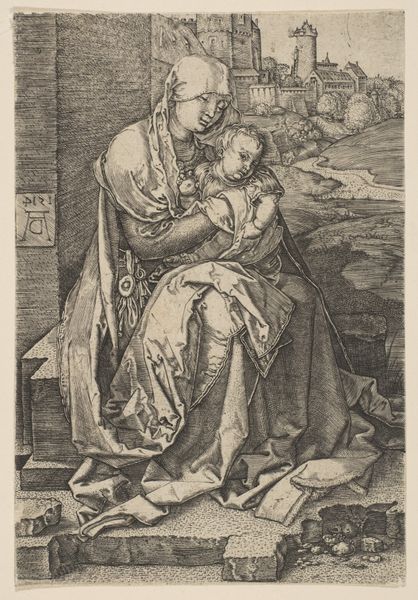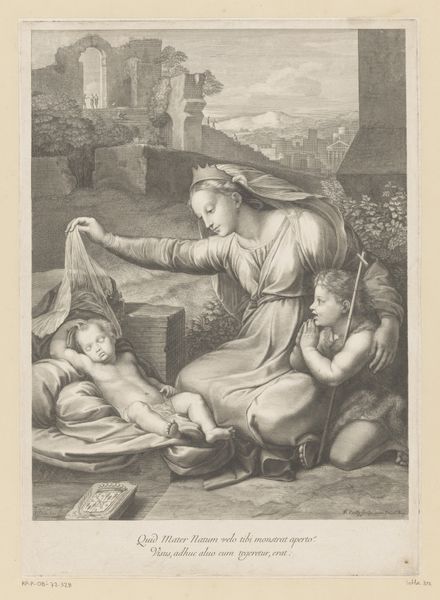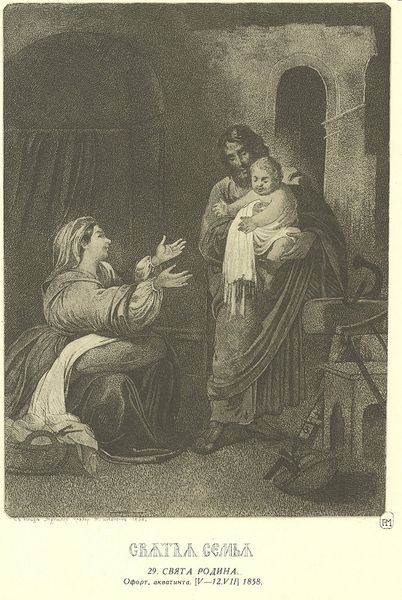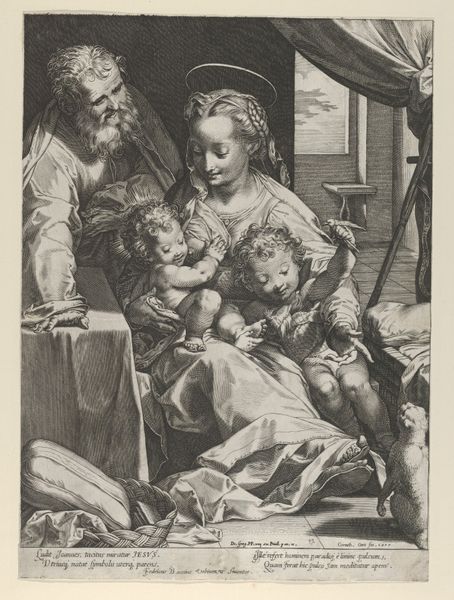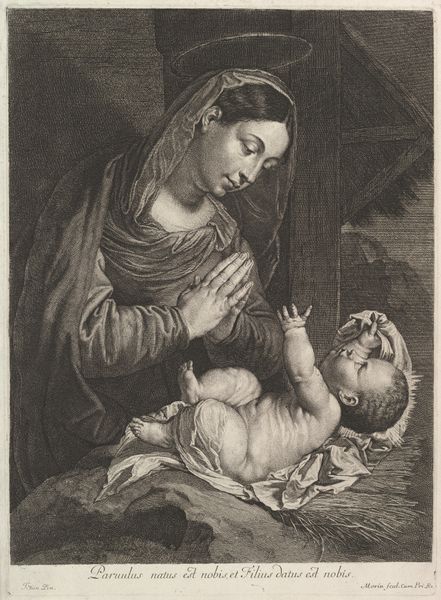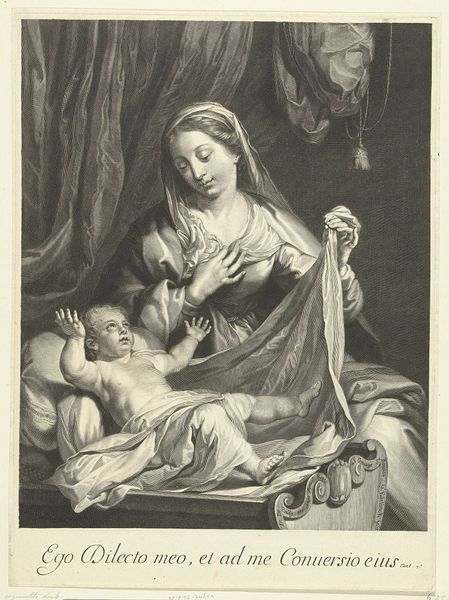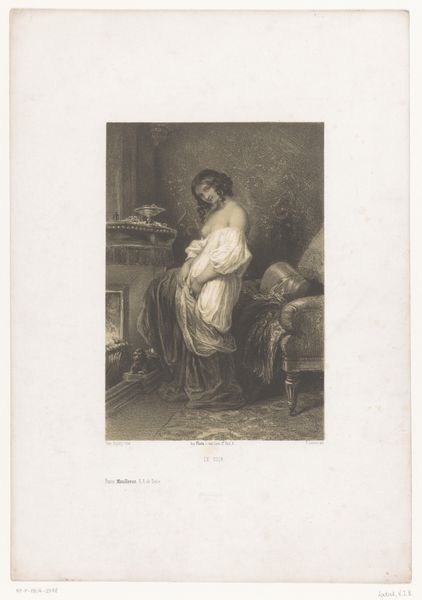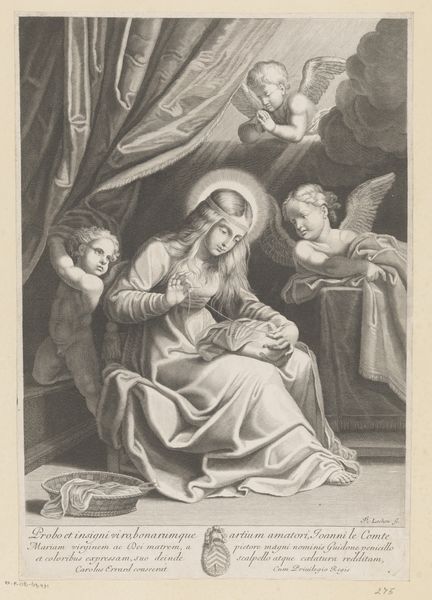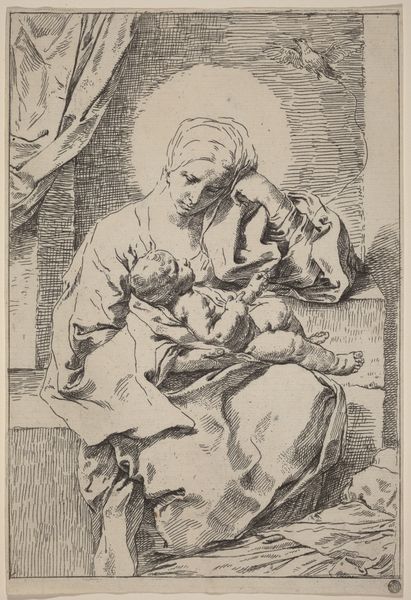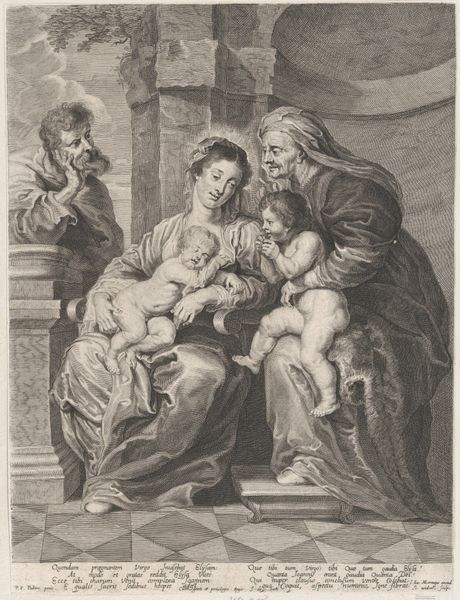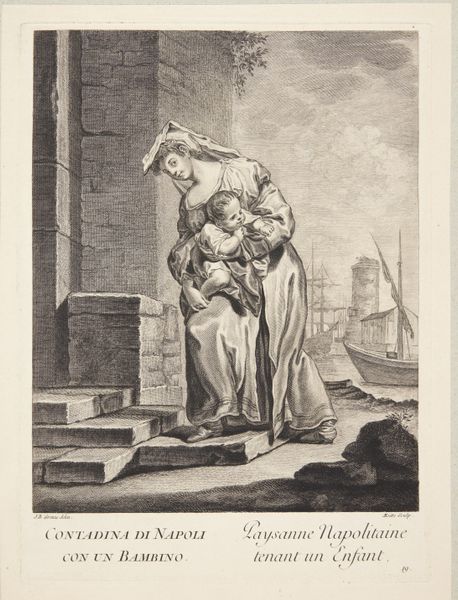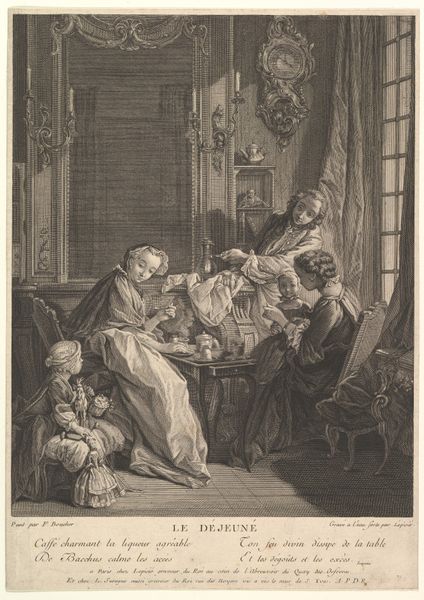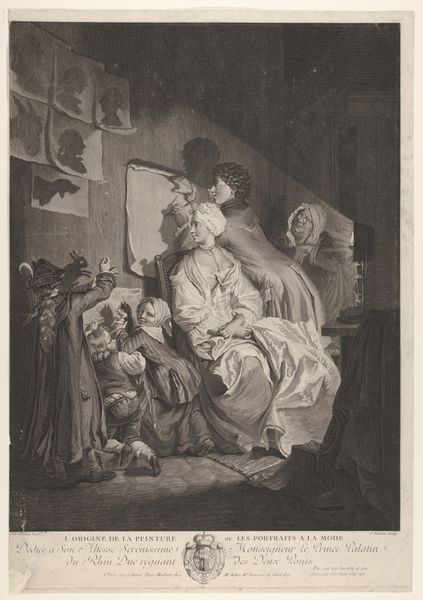
Allegory on Melancholy, with a woman kneeling towards the left holding a skull 1729 - 1740
0:00
0:00
drawing, print, engraving
#
portrait
#
drawing
#
allegory
#
baroque
# print
#
dog
#
figuration
#
form
#
vanitas
#
men
#
line
#
portrait drawing
#
history-painting
#
engraving
#
miniature
Dimensions: Sheet (Trimmed): 16 9/16 × 10 1/8 in. (42 × 25.7 cm)
Copyright: Public Domain
Curator: Before us is Henri Simon Thomassin’s engraving, "Allegory on Melancholy, with a woman kneeling towards the left holding a skull," created sometime between 1729 and 1740. It’s quite a striking piece currently held at the Metropolitan Museum. Editor: It does evoke a certain… still somber mood. The monochromatic palette, achieved through the engraving process, accentuates the woman's downcast pose and the symbols surrounding her. The composition feels meticulously arranged, drawing the eye immediately to her melancholic figure. Curator: Indeed. Let's consider the material conditions of its production. Engraving, as a printmaking process, necessitates a painstaking, physical engagement with the plate. The artist is effectively shaping the matrix, using burins to carve lines that will then hold the ink. The fine lines, cross-hatching, give shape to light, shadow, form. Thomassin’s expertise and the labour that goes into each print is palpable here, a tangible expression of skill passed from master to apprentice, from workshop to consumer. Editor: Precisely, this points to the cultural significance and complex symbolism permeating Baroque art. The open book and celestial globe reference a loss of interest in knowledge and science, an understanding perhaps not obtainable by simply reading about them. Even the tools laid carelessly represent diminished skill or potential unrealized. The architectural backdrop reinforces confinement, emotional or physical, but there may even be something to the overall composition implying a self portrait; maybe even about what is being engraved in the plate for creation by printing of the copper in itself. Curator: And what about the iconography—the skull as a memento mori, reminding us of our mortality; the forlorn dog beside her implying fidelity and faithfulness? This dense visual language was incredibly significant to audiences in the 18th century. I find it telling to look closely at how such elements, strategically positioned within the frame, help shape our understanding of Melancholy as an intellectual and emotional state. Editor: It's also worth pondering the broader social context of its circulation. Prints allowed for wider dissemination of ideas, democratizing imagery across geographic and economic strata. We should thus examine how an engraving such as this operated as a material object, and circulated both artistic styles and new notions through workshops across borders; also how it gave visibility and shape to ideas which resonated across social classes. Curator: A fascinating lens through which to appreciate this engraving. It's been such a wonderful, thorough discussion which lets us see its technical precision in relation to historical and thematic richness. Editor: A great demonstration in appreciating it and how Thomassin captured the complexity and production values of emotion with each strike of the tool.
Comments
No comments
Be the first to comment and join the conversation on the ultimate creative platform.
